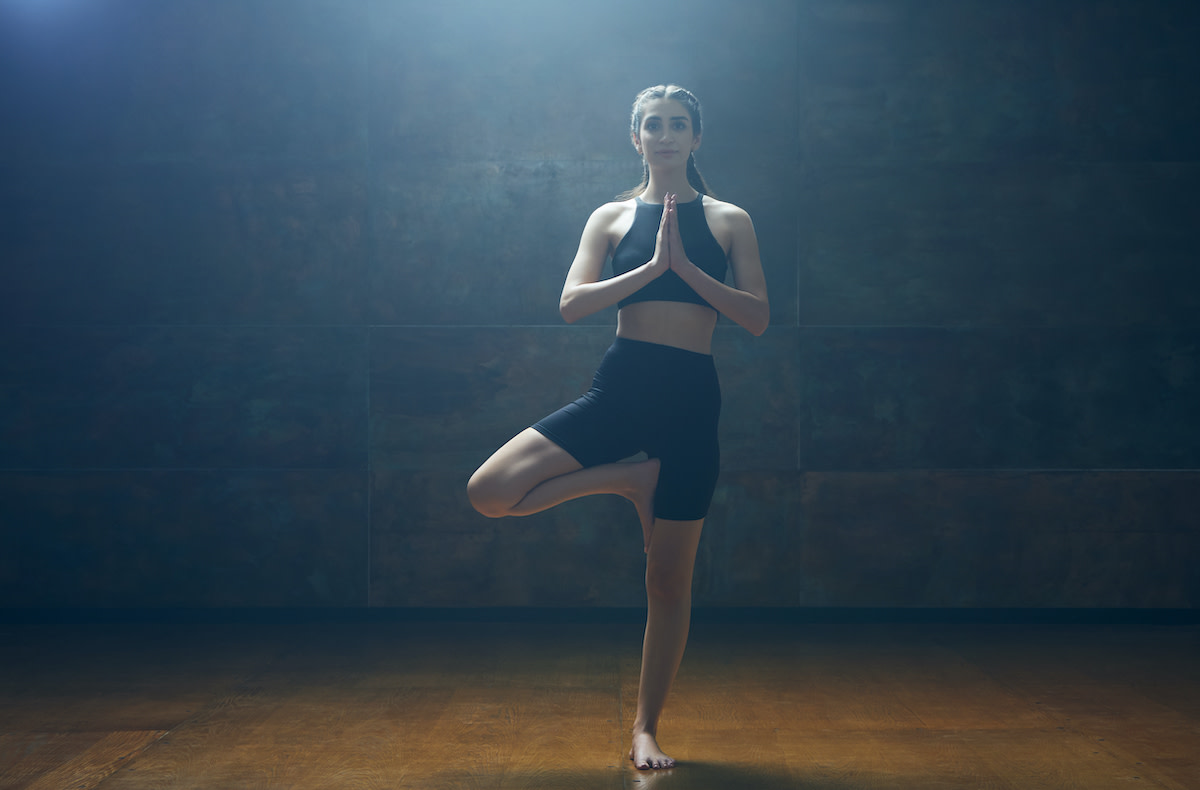How to Do Tree Pose in Yoga: 3 Ways to Modify Tree Pose
Written by MasterClass
Last updated: Sep 22, 2021 • 3 min read
Yoga is a practice that has been around for thousands of years that works to condition the body, mind, and spirit.
Learn From the Best
What Is Tree Pose?
Tree pose, also known as Vrikshasana or Vrksasana (from the Sanskrit words “vrksa” meaning “tree,” and “asana” meaning “pose”), is a standing pose in yoga that requires balance and coordination. This yoga pose involves tucking one leg into the other while your hands are in a prayer position above your head, resembling a tree. This pose can improve balance, stability, and strengthen your core.
3 Benefits of Tree Pose
There are a few benefits to tree pose, such as:
- 1. Stretches your feet. Tree pose can help stretch and strengthen the ligaments and tendons in your feet.
- 2. Improves balance. Tree pose requires proper weight distribution and posture, which can help provide stability to your groin, thighs, hips, and pelvis.
- 3. Strengthens your core. Balancing your total weight on one leg requires active engagement in your core, which can help strengthen it over time and provide increased steadiness.
How to Do Tree Pose
Before performing any new exercise, consult your doctor to determine if it’s right for you. Tree pose is a beginner position that requires coordination and balance. Here is a step-by-step guide on how to perform tree pose: 
- 1. Get into position. Tree pose often starts from mountain pose (or Tadasana), with both feet planted firmly on the ground and your weight adequately distributed so that you are balanced.

- 2. Bend one leg at the knee. Choose the leg you are going to fold in first. If your left leg is your standing leg, keep your left foot planted on the ground, and slowly bend in your right leg at the right knee so that the sole of your right foot rests against your left inner thigh (known as the half-lotus position in Bikram yoga). Point the knee of your bent leg outward, away from your body.
- 3. Lengthen your body. Clasp your hands together in Anjali Mudra (also called the “prayer position”) and raise your arms above your head. In this form, your head, shoulders, pelvis, and left foot should align vertically. The top of your torso should lift slightly, with your tailbone extending towards the ground.
- 4. Hold and repeat. Hold the pose for as long as necessary, making sure to breathe properly. When you’re ready to switch legs, exhale, and return to mountain pose to start again.
4 Tips for Performing Tree Pose
Though it seems like one of the more simple balancing poses, tree pose requires the proper positioning and alignment:
- 1. Keep your back straight. Improper form can lessen the effectiveness of tree pose, or worse, lead to injury. Keep your spine and body straight, rather than bending backward.
- 2. Avoid pressing your foot into your knee. The foot of your lifted leg should not put any extra weight on the knee of your standing leg. Place the raised foot either above or below the knee, and stabilize yourself with your rooted leg.
- 3. Align your hips. When you bend your leg in, it’s important to keep your left hip and right hip level with each other. Try not to “pop” up either hip so that one side is higher than the other. If you’re struggling to keep your hips square, lower the foot of the bent leg.
- 4. Keep your feet straight. The foot of your standing leg should remain pointed straight ahead to maintain proper alignment, and the toes on the foot of your bent leg should point down towards the floor.
3 Modifications for Tree Pose
There are a few modifications that can make tree pose more accessible:
- 1. Wall tree: Wall tree is an excellent modification for those who need help with balance. To do this modified pose, use the support of a flat wall to help stabilize your form.
- 2. Reclining tree: If balancing on one leg is too strenuous or you can’t get your bent knee to flex out properly, first try lying on your back on the floor while executing this pose.
- 3. Low tree: If you have limited flexibility, keep the ball of your foot on the ground while resting your heel against the other shin.
How to Do Yoga Safely and Avoid Injury
Proper form and technique are essential to ensure the safety and effectiveness of a yoga practice. If you have a previous or pre-existing health condition, consult your physician before practicing yoga. Yoga poses may be modified based on your individual needs.
Ready to Learn More About Yoga?
Unroll your mat, get a MasterClass Annual Membership, and get your om on with Donna Farhi, one of the most celebrated figures in the world of yoga. Follow along as she teaches you the importance of breathing and finding your center as well as how to build a strong foundational practice that will restore your body and mind.

